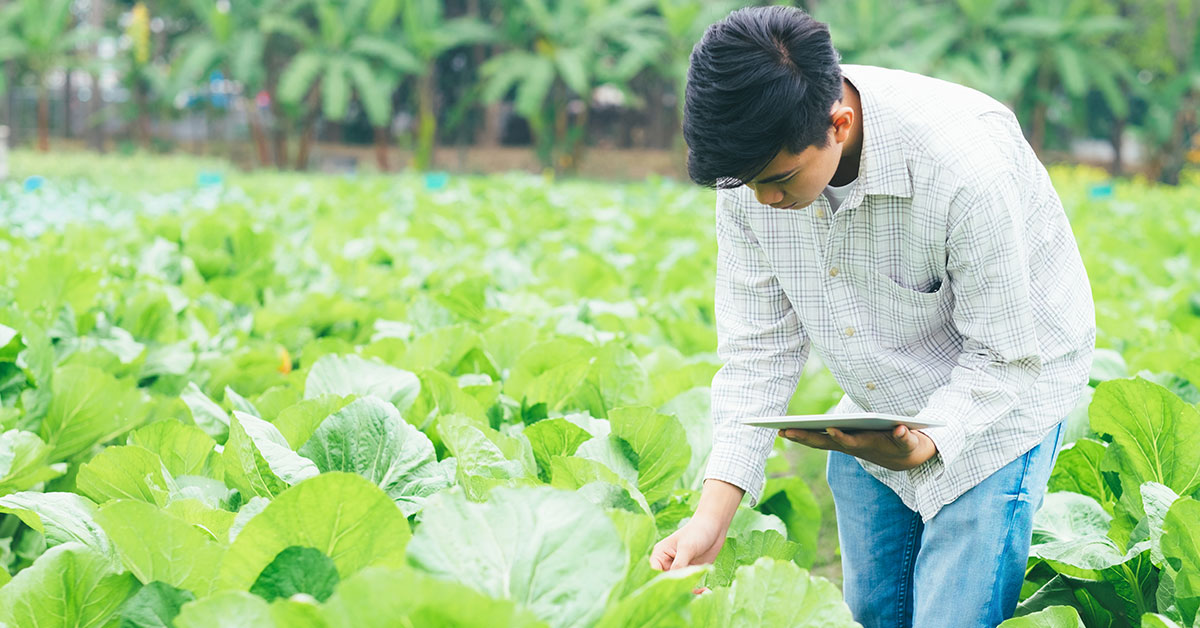We need much more profitable arable land, but we are in fact responsible for climate change and soil depletion caused by the intensive exploitation of natural resources.
The United Nations predicts that the world population will reach 9.7 billion by 2050 and will reach nearly 11 billion by the end of the century. This will require an increase in production, with the same land, even higher than 60%.
Towards efficient and technological agriculture
Technology and digital are the solutions that farmers must adopt to combat this situation. It is necessary to make agriculture more and more rational, efficient and sustainable, reducing waste and optimizing resources.
All of this is achievable through the use of sensors, artificial intelligence, 5G and other technologies; in other words, through the development of smart agriculture or precision agriculture.
Why should we invest in smart agriculture?
Smart agriculture promises to reduce the use of plant protection products and fertilizers by 85% and to increase yields, and consequently the turnover, by up to 20%.
And it is an engaging and rapidly growing market, in fact it is estimated that in the next five years it will double requests and earnings, reaching a total value of 22 billion dollars.
Sustainability and traceability
Smart agriculture is also synonymous with sustainability, loudly invoked not only by the European Union, but also by consumers, who are increasingly attentive to the origin and methods of food production.
The “Farm to Fork” strategy, promoted by the EU, pushes for a healthier and more sustainable food system, which faces climate change and protects the environment and biodiversity, by enhancing organic farming.
Research and innovation are one of the key moments of this strategy. And a strengthening of the agritech represents a significant support for the traceability of food. Through blockchain it is in fact possible to certify the production cycle by offering reliable and safe data to the consumer.
What is the role of sensors in smart agriculture?
Sensors are among the protagonists of precision agriculture. They allow you to collect strategic data for choosing the most suitable plants for a specific type of soil. They also suggest the most suitable times for working in the fields and provide for the expected yield for the season.
Last but not least, they optimize water consumption based on the needs of the different parts of the land, allowing savings of between 25 and 60%.
Space for artificial intelligence
Thanks to AI, it is possible to take note of humidity, temperature, climate, weather forecasts and satellite data to make the irrigation process more efficient. It is also possible to detect pest attacks or diseases before they take hold, thus avoiding compromising production.
And artificial intelligence plays a key role in the development of self-driving tractors. They collect information and autonomously carry out actions to increase productivity.
A swarm of drones
The self-driving drones fly over the fields and orient themselves thanks to the GPS, communicating with each other to organize the work. They check the health of crops, making high-definition films and photographs. The information collected is transmitted to a computer from which the situation can be monitored.
The drones also allow you to spray pesticides only in the useful areas and to identify the portions of land where proper irrigation is not carried out.
And the technology is not limited to the control of the land, but will soon move to air management, through the construction of pollinator-robots that make up for the shortage of insects.
Smart agriculture is therefore the perfect ally for the practical needs of farmers, for the attentive curiosity of consumers and for the health of a planet that cannot be further compromised.
Sources: eni.com, agrifood.tech


